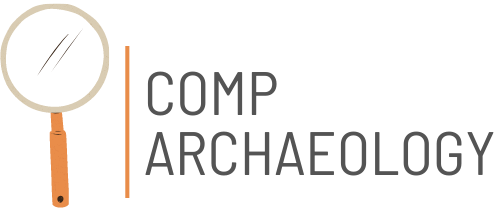The world of archaeological biology has witnessed remarkable transformations in recent years, particularly with the evolution of light microscopy technologies. As researchers delve deeper into the microscopic remnants of ancient life, the photonic microscope has emerged as an indispensable tool for uncovering secrets locked within biological specimens recovered from archaeological sites. This guide examines the latest advancements in photonic microscopy for 2024, offering insights into the features, capabilities, and considerations that matter most to professionals working at the intersection of archaeology and biological sciences.
Optical Performance and Magnification Capabilities in Modern Photonic Microscopes
The heart of any photonic microscope lies in its optical performance, which determines the clarity and detail of the images produced. For archaeological biologists examining ancient pollen grains, preserved tissues, or microbial remains, the quality of the objective lens system cannot be overstated. Modern microscopes designed for research applications typically feature multiple objective lenses that provide a range of magnification levels, allowing investigators to switch seamlessly between broader contextual views and highly detailed examinations of cellular structures. The numerical aperture of these lenses plays a crucial role in determining resolution capabilities, as it governs the microscope's ability to distinguish between closely spaced features within a specimen. Higher numerical aperture values generally translate to superior resolving power, enabling researchers to discern fine structural details that might otherwise remain hidden. This capability proves particularly valuable when analysing degraded biological materials from archaeological contexts, where preservation quality varies considerably and every observable detail contributes to our understanding of past ecosystems and human interactions with the natural world.
Objective lens quality and numerical aperture considerations
When evaluating photonic microscopes for archaeological biology applications, the construction and optical characteristics of objective lenses warrant careful attention. Premium objective lenses incorporate advanced optical coatings and multi-element designs that minimise aberrations and maximise light transmission across the visible spectrum. These refinements become especially important when working with specimens that exhibit low contrast or require observation under various illumination conditions. The numerical aperture specification directly influences both resolution and depth of field, creating a trade-off that researchers must consider based on their specific requirements. Archaeological samples often present unique challenges due to their heterogeneous nature and variable preservation states, making it essential to select microscopes with objective lens sets that offer flexibility across different magnification ranges whilst maintaining consistent optical quality throughout the system.
Magnification range requirements for archaeological biological specimens
The diverse nature of archaeological biological materials necessitates microscopes capable of accommodating a broad magnification range. Pollen analysis might require magnifications between one hundred and four hundred times, whilst examination of cellular structures in preserved tissues could demand magnifications exceeding one thousand times. Contemporary photonic microscopes address these needs through modular objective lens turrets that accommodate multiple lenses, typically ranging from low-power scanning objectives through to high-magnification oil immersion lenses. This versatility allows researchers to conduct initial surveys of specimens at lower magnifications before progressively increasing magnification to focus on specific features of interest. The ability to seamlessly transition between magnification levels without compromising image quality represents a significant advantage in research workflows, as it enables efficient specimen assessment whilst preserving the fine optical performance necessary for detailed documentation and analysis of archaeological biological remains.
Digital integration and image capture technologies
The integration of digital imaging capabilities has revolutionised how archaeological biologists document and analyse microscopic specimens. Modern photonic microscopes increasingly feature built-in digital cameras or provisions for camera attachment, transforming traditional observation into a comprehensive documentation and analysis platform. This digital dimension facilitates not only the creation of permanent records but also enables sophisticated image processing techniques that can enhance contrast, measure features, and reveal details that might escape direct visual observation. The growing palette of digital tools available to researchers has expanded the possibilities for comparative studies and collaborative research, as high-quality digital images can be readily shared among colleagues across institutions and continents. Furthermore, digital capture enables the creation of image libraries that serve as invaluable resources for training purposes and longitudinal studies tracking changes in specimen condition over time.
Camera Resolution and Sensor Technology for Documentation
The resolution capabilities of integrated camera systems represent a critical specification when selecting a photonic microscope for archaeological biology applications. Camera sensors vary considerably in their pixel counts and physical dimensions, with higher resolution sensors capable of capturing greater detail from the optical image projected by the microscope. Contemporary research-grade microscope cameras typically employ scientific complementary metal-oxide-semiconductor sensors or cooled charge-coupled device sensors, each offering distinct advantages in terms of sensitivity, speed, and noise characteristics. For documentation of archaeological specimens, where faithful colour reproduction and fine detail preservation prove essential, camera systems with resolutions exceeding five megapixels provide adequate performance for most applications, whilst more demanding work may benefit from sensors offering ten megapixels or higher. The sensor size also influences the field of view captured at a given magnification, with larger sensors encompassing more of the specimen area and potentially reducing the need for image tiling when documenting larger structures or creating composite images of entire specimens.
Software compatibility and data management systems
The software ecosystem surrounding modern photonic microscopes extends far beyond simple image capture, encompassing sophisticated analysis tools and data management solutions. Many manufacturers provide proprietary software packages that integrate camera control, image acquisition, and basic measurement functions, whilst also supporting export to standard image formats for further processing in third-party applications. The ability to work with widely adopted formats proves particularly important in archaeological research contexts, where long-term data preservation and cross-platform compatibility ensure that valuable observations remain accessible as technology evolves. Advanced systems may incorporate features such as automated image stitching for creating panoramic views of specimens, focus stacking to extend depth of field, and direct integration with laboratory information management systems. These capabilities streamline research workflows and enhance data organisation, allowing archaeological biologists to maintain comprehensive digital archives that link microscopic observations with broader contextual information about specimen provenance, associated artefacts, and environmental conditions at excavation sites.
Illumination systems and enhanced imaging techniques
 Proper illumination constitutes a fundamental requirement for high-quality microscopic observation, and recent advances in lighting technology have significantly enhanced the capabilities of photonic microscopes. The transition from traditional halogen lamps to light-emitting diode illumination systems has brought numerous benefits to archaeological biology applications, including improved energy efficiency, extended operational lifespans, and more consistent colour temperature across the operating life of the light source. Beyond these practical advantages, modern illumination systems offer enhanced control over light intensity and distribution, enabling researchers to optimise imaging conditions for specimens with varying optical properties. The ability to adjust illumination parameters proves particularly valuable when examining archaeological materials, which often present challenges such as low inherent contrast, uneven specimen thickness, or surface irregularities that can complicate observation and documentation efforts.
Proper illumination constitutes a fundamental requirement for high-quality microscopic observation, and recent advances in lighting technology have significantly enhanced the capabilities of photonic microscopes. The transition from traditional halogen lamps to light-emitting diode illumination systems has brought numerous benefits to archaeological biology applications, including improved energy efficiency, extended operational lifespans, and more consistent colour temperature across the operating life of the light source. Beyond these practical advantages, modern illumination systems offer enhanced control over light intensity and distribution, enabling researchers to optimise imaging conditions for specimens with varying optical properties. The ability to adjust illumination parameters proves particularly valuable when examining archaeological materials, which often present challenges such as low inherent contrast, uneven specimen thickness, or surface irregularities that can complicate observation and documentation efforts.
Led lighting innovations and adjustable intensity controls
Light-emitting diode technology has fundamentally transformed microscope illumination, offering advantages that extend well beyond simple lamp replacement. Contemporary LED illumination systems provide uniform, daylight-balanced light that facilitates accurate colour representation crucial for identifying pigments, stains, and natural colourations in archaeological biological specimens. The inherently cool operation of LED systems eliminates the heat generation associated with traditional incandescent lamps, protecting sensitive specimens from thermal damage during extended observation sessions and reducing the need for heat-filtering glass that can affect colour fidelity. Adjustable intensity controls allow researchers to fine-tune illumination levels to suit different specimens and observation techniques, with some advanced systems offering independent control over transmitted and reflected light sources. This flexibility enables optimal imaging conditions across diverse sample types, from transparent pollen grains requiring transmitted light to opaque surfaces necessitating reflected illumination. The extended lifespan of LED systems also reduces maintenance requirements and ensures consistent illumination characteristics throughout lengthy research projects.
Contrast enhancement methods for archaeological material analysis
Archaeological biological specimens frequently exhibit low inherent contrast that can obscure cellular details and structural features of research interest. Modern photonic microscopes address this challenge through various contrast enhancement techniques that reveal otherwise imperceptible specimen characteristics. Phase contrast microscopy proves particularly valuable for examining unstained specimens, transforming subtle variations in optical path length into visible intensity differences that highlight cellular boundaries and internal structures. Differential interference contrast represents another powerful technique that generates a pseudo-three-dimensional appearance, enhancing the visibility of surface topography and internal features through the interaction of polarised light with specimen structures. Some systems incorporate darkfield illumination capabilities that create bright features against dark backgrounds, dramatically improving the visibility of fine details in specimens with low contrast or high transparency. The selection of appropriate contrast enhancement methods depends on specimen characteristics and research objectives, with versatile microscope systems offering multiple techniques providing greater flexibility for addressing the varied demands of archaeological biology investigations.
Comparative analysis of 2024 photonic microscope models
The microscopy market in 2024 presents archaeological biologists with an extensive array of photonic microscope options spanning a considerable range of capabilities and price points. Understanding the distinctions between entry-level and professional-grade systems helps researchers make informed decisions that align instrument capabilities with project requirements and budget constraints. The global microscopy market reached a valuation of nine point seven billion dollars in 2024, reflecting robust demand across research and clinical applications, with projections suggesting growth to thirteen point three billion dollars by 2029 at an annual growth rate of six point six percent. This expanding market encompasses optical microscopes alongside electron microscopes and scanning probe microscopes, with optical systems maintaining their position as accessible and versatile tools for biological research. Leading manufacturers such as Nikon Corporation, which reported revenue of five thousand and ninety-two point four million dollars in 2023, and Olympus Corporation, which experienced revenue growth of six point two percent in 2023 compared to the previous year, continue to drive innovation in photonic microscopy whilst serving diverse market segments from educational institutions through to advanced research facilities.
Entry-level versus professional-grade systems: performance evaluation
Entry-level photonic microscopes designed for educational and basic research applications typically offer fundamental capabilities at accessible price points, making them attractive options for institutions with limited budgets or projects with modest requirements. These systems generally feature fixed illumination, basic objective lens sets, and simplified mechanical components that reduce manufacturing costs whilst maintaining adequate performance for routine observations. Professional-grade research microscopes, in contrast, incorporate precision optics, sophisticated illumination systems, and robust mechanical construction that delivers superior image quality and operational reliability. The optical performance gap between these categories manifests primarily in resolution capabilities, colour fidelity, and field flatness, with professional systems providing sharper images across the entire field of view and more accurate colour representation essential for documentation purposes. Mechanical differences include smoother focus controls, more precise stage movements, and greater stability that proves crucial when working at high magnifications where even minor vibrations can compromise image quality. For archaeological biology applications requiring detailed morphological analysis and high-quality documentation, professional-grade systems generally justify their higher initial investment through enhanced capabilities and improved research outcomes.
Value Proposition and Long-Term Investment Considerations for Field Research
Evaluating photonic microscopes for archaeological biology extends beyond immediate technical specifications to encompass long-term value and operational considerations. The durability and serviceability of microscope systems influence their effective lifespan and total cost of ownership, with well-constructed instruments from established manufacturers typically providing decades of reliable service when properly maintained. Availability of replacement parts, access to technical support, and upgrade pathways represent important factors that affect the long-term utility of microscope investments. Some manufacturers offer modular systems that accommodate future enhancements such as advanced camera systems, additional contrast methods, or automated stage controls, providing flexibility to expand capabilities as research needs evolve or budgets permit. For field research applications in archaeological contexts, portability and robustness assume particular importance, with some systems designed specifically to withstand transport and operation in challenging environments distant from laboratory facilities. The emergence of portable microscopes addresses needs in resource-limited settings, whilst advances in live cell imaging and integration of artificial intelligence for image analysis point toward future capabilities that may influence current purchasing decisions. Researchers must weigh these diverse factors against immediate requirements and available resources to identify systems that provide optimal value across their anticipated operational lifespan whilst supporting both current investigations and future research directions in archaeological biology.








